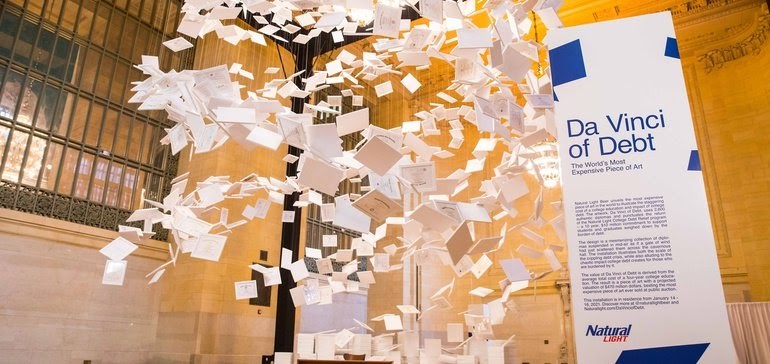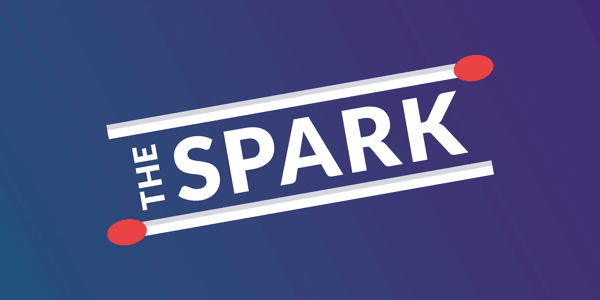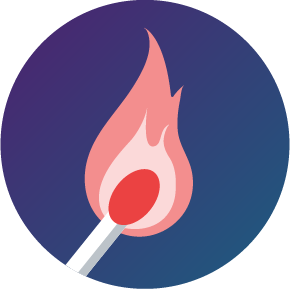Dynamic DynamitePinterest has long lived on the fringe of the social media world. Not your typical social platform, this content and product discovery board houses a wealth of consumer data — and it knows how to use it. If the Pinterest Predicts trends report hasn’t yet swayed your brand, the platform’s new Dynamic Creative ad process may do the trick.
The ad update, launched this week, lets marketers automatically generate hundreds of Pin variants with unique messaging tailored to reflect individual viewer’s behavior. Pinterest’s process responds to audiences’ search histories to show them relevant Pins from your businesses’ catalog, with dynamically displayed creative and text elements.
The update means brands can target relevant audiences even more granularly, with messaging, images, and other elements that resonate with viewers. And the best part? It’s all done automatically. If your brand is interested in this new feature, just make sure you have the Pinterest tag installed on your website to take your tracking to the next level.
TL;DR: Pinterest launched a “Dynamic Creative” ad process that enables brands to reach audiences with highly relevant ads based on user behavior.
Growth From WithinRather than reinventing the wheel in 2021, brands are focusing on ways to keep the old one spinning. And by the old wheel, we mean existing customers. This year marketers are searching within (their CRM) and leaving some things (their lead gen strategies) in the past.
That’s right; lead gen is no mo’. According to this Gartner report, 73% of CMOs are erring on the side of caution regarding growth strategies and plan to rely on loyal customers to drive the market engine. So rather than diving into the development of new markets, sales teams are sitting back and grabbing a drink with their old pals (read: customer retention).
With a scaled-back approach and sights set on a familiar target, marketers can be savvy and intentional with their time and energy spent on growth … After all, it’s five times more expensive to acquire one customer than it is to retain one. So, it’s never a bad idea to revisit your customer communication strategy and identify potential organic growth areas. It can be as simple as a re-engagement email campaign or a customer feedback survey. If you’ve hooked a customer on one of your services, look for ways to sell them on the rest — go forth and rekindle.
TL;DR: 73% of marketers are focusing their efforts on existing customers instead of developing new markets.
Put Your Money Where the People AreWe’ve all spent more time looking down at our screens than we have in years past, and marketers have caught on. From shopping to spending time with friends, pretty much everything we do has gone virtual, driving brands to increase mobile ad spend by 26% in 2020, according to a recent report from App Annie.
Increased ads aren’t deterring consumers’ mobile usage. Consumers spent $143 billion on apps alone last year. To pass the time, many have turned to gaming apps, which a Facebook study says has grabbed the attention of nearly 28 million Americans. Spending time on our cellphones over watching TV was another preferred pastime amongst Americans last year, with an overall 8% increase in mobile screen time over watching TV. Digital ad placement followed and saw a 95% increase year-over-year in the United States.
With people on their phones now more than ever, take the time to truly get to know your audience before crafting your next paid social campaign. Gain some intel on where your target audience spends most of their screen time and use tools such as an ad software development kit and business intelligence to pinpoint where to place your ads. Our advice? Always think mobile. Whether it’s investing more time in understanding your key audience’s social media behaviors or investigating where to place your ads, the small screen is where brands can make it big.
TL;DR: Marketers should have a keen understanding of their audiences’ social media habits and use business intelligence tools such as an ad SDK to figure out where to place ads.
What Lit Us Up
Da Vinci of DebtBeer and college students go together like, well, beer and college students. A major topic on the mind of said students? Student loan debt. This is why Natural Light created the "most expensive piece of art in the world," using more than 2,000 real college diplomas to highlight the U.S. student debt crisis, a topical issue for many of the brand’s target demographic.
The installation is valued at $470 million, the cost of all 2,600 diplomas used in the piece. (Compare that to the most expensive artwork ever sold: Da Vinci's very own "Salvator Mundi.") While the “ode to debt” was located in Grand Central Terminal, the beer company partnered with Snapchat to let users recreate the "Da Vinci of Debt" via AR. Users could view and explore the exhibit virtually and tap on different aspects to learn more about the student loan crisis and Natural Light's efforts to alleviate it. Unique and innovative experiential marketing that’s both COVID-safe and Gen Z-friendly in a time when it’s increasingly hard to do so? Check!
Natural Light made college debt relief a part of its marketing strategy with the hopes of attracting younger (and therefore student loan-addled) consumers. It brought attention to both its brand and student loan plan in a fun and interactive way. Experiential marketing is a great way to reach younger consumers, and this beer brand demonstrates it’s definitely not off the table.
TL;DR: Beer brand Natural Light creates the "Da Vinci of Debt" to bring attention to an issue facing many of its customers: student loan debt. (Was this email forwarded to you? Sign up here.)
|
-1.png?upscale=true&width=346&upscale=true&name=Tier%20One%20logo_color%20(1)-1.png)


